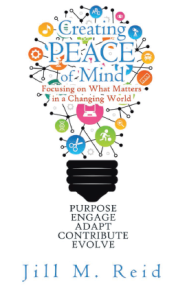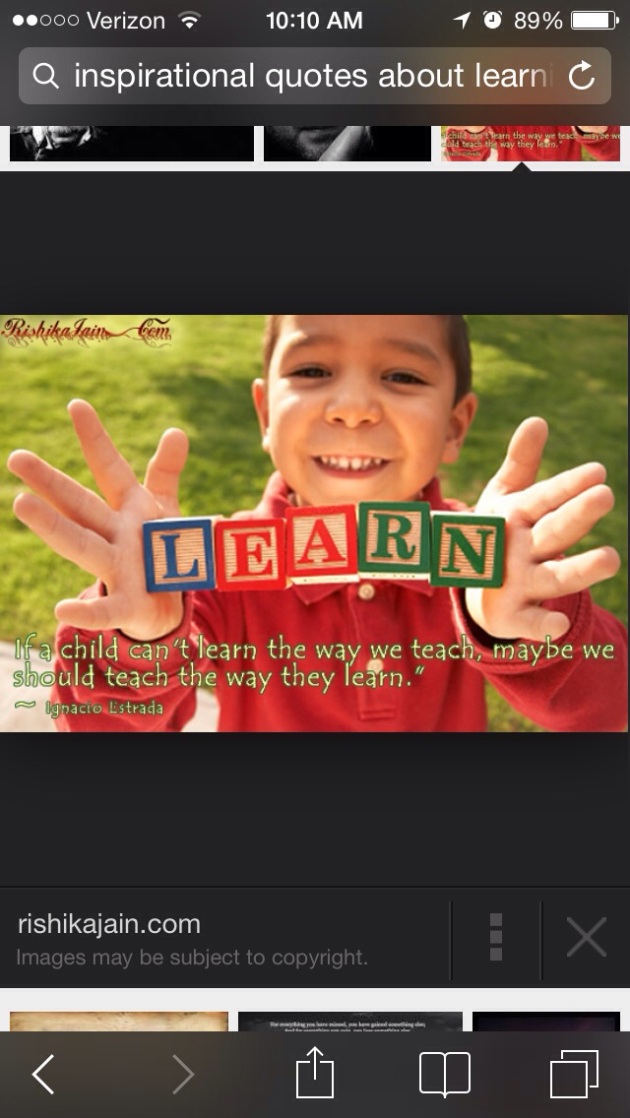 My new book is out! I hope you will check it out. For those looking to learn more about Creating PEACE of MIND, I am writing this blog post to share just a little bit about my approach and philosophy. I have made many mental shifts over the past few years for many reasons. Firstly, I am a parent. Secondly, I am a parent of a child with special needs. Thirdly, I am an educator in gifted education trying very hard to adapt in a rapidly changing world. For these main reasons I began asking myself why everything is the way that it is. One result was the book “Creating PEACE of MIND: Focusing on What Matters in a Changing World.” I also became a believer in the new purpose of education. It holds a place for all the important movements upsetting everyone’s apple cart. I think we all need a little shake up but I also needed a plan for putting my apple cart back in order and hopefully it will be even better than it was before.
My new book is out! I hope you will check it out. For those looking to learn more about Creating PEACE of MIND, I am writing this blog post to share just a little bit about my approach and philosophy. I have made many mental shifts over the past few years for many reasons. Firstly, I am a parent. Secondly, I am a parent of a child with special needs. Thirdly, I am an educator in gifted education trying very hard to adapt in a rapidly changing world. For these main reasons I began asking myself why everything is the way that it is. One result was the book “Creating PEACE of MIND: Focusing on What Matters in a Changing World.” I also became a believer in the new purpose of education. It holds a place for all the important movements upsetting everyone’s apple cart. I think we all need a little shake up but I also needed a plan for putting my apple cart back in order and hopefully it will be even better than it was before.
I will use the acronym from the book below to briefly describe some revelations from my “research” and practice that might seem common sense but are sadly not always common practice in homes and classrooms. I have research in quotes because the psychological research is already well established by others and I have attempted to integrate it into practice both at home and at school to see how it can change larger perceptions and improve communication. Dr. Carol Dweck, Dylan Wiliam, Angela Duckworth, Albert Bandura and many other respected researchers have done the hard work. I hope to show the importance of their work in a purposeful and integrated framework.
P.E.A.C.E. of MIND stands for Purpose, Engage, Adapt, Contribute, Evolve, and M.I.N.D. stands for a Mindset of Integrating New Developments. The book goes more in-depth to explain how alternative perspectives can cause confusion and frustration. Recognizing some of the “problematic” expressions of dealing with transition, challenge, and change might stand out to parents or teachers even more clearly if they are dealing with a particular situation.
Here are some of the shifts in perception:
Purpose: Mindset is a very important factor in how we approach the world. The word mindset can have many meanings and is not always clear. It has to do with beliefs about ability or how someone defines the word smart. The misconception is that abilities are fixed and can’t change much with effort. The truth is that strategies and effort have a huge impact on real success and growth. The word purpose sets the tone for how we approach the world. Is the purpose of what we do to prove perfection or to make progress? The personal answer changes actions, interactions, and the emotional experience of daily life for everyone. Adults can shape beliefs about ability through their praise, feedback, and the things they value. Unfortunately, society plays a big role in adding to the misconception that abilities are fixed and that causes big problems. This one concept supports all the other concepts that follow.
Engage: The choice to take on a challenge and put forth effort has a lot to do with personal motivation, attention, and expectations. The big shift that is happening in education is helping children discover their own ability to engage. What motivates them and what is the purpose for what they are doing? Teachers and parents can support engagement by offering clear expectations and examples. By building awareness of this concept we can understand students better and more importantly, we can help them understand themselves better which will have a lasting positive impact. Motivation is a complicated concept that is deeply intertwined with engagement and it is different for everyone. This stage is like providing a seed with the necessary conditions to germinate.
Adapt: The ability to adapt is a skill built through multiple experiences and we never stop honing or needing this skill. Our willingness to understand and accept feedback and then make necessary adjustments is arguably one of the most important experiences we can build for our children. Adults can shape the ability to adapt by understanding their role in offering different types of feedback and assisting children in valuing and applying feedback. Adapting is necessary in more than just academic areas. Improved communication and tools in this area are needed in the coming years. This encourages not “sugar-coating” things to an extent that awareness is undermined.
Contribution: This is the most profound shift that I was able to make. The purpose of education has become contribution which combines all the 21st century buzz words and initiatives that are so important. Adults are helping students find their voices and methods of adding something meaningful to the community. Someone could have the best idea in the world but if they do not have the skills and confidence to share with and convince others, it will not matter much. The difference between contribution and mere completion are profound and this idea is interrelated with terms already described above. In addition, contribution at young ages, adds to a positive sense of identity both personal and within the community.
Evolve: Evolution signifies an awareness of change that includes evaluation and personal reflection. Evolve combines the above elements with an expectation of continued growth. The better we become at self-evaluation, the better we get at integrating change, overcoming setbacks, and making progress. This also applies to evaluating our own mental process as we prepare to take on further challenges. Adults can help children by empowering evaluation.
Together these elements help to create P.E.A.C.E. of M.I.N.D (a mindset of integrating new developments.) This means that we can develop people that have a purpose of growth, they have “grit” or persistence, and a sense of identity that contributes to the changing world as part of a community. A diploma is just a piece of paper. PEACE of MIND is invaluable. Students need both to survive and thrive in this changing world.
